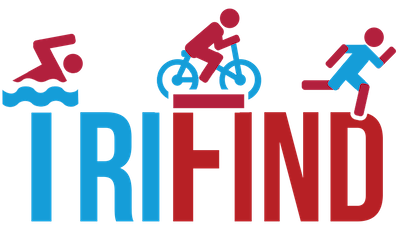Do You Enjoy Being Injured?
At any given point in time most endurance athletes know a friend, colleague or coworker who is battling an injury. Or worse, maybe it’s you who is suffering from a run induced or related injury.
injury. Or worse, maybe it’s you who is suffering from a run induced or related injury.
 injury. Or worse, maybe it’s you who is suffering from a run induced or related injury.
injury. Or worse, maybe it’s you who is suffering from a run induced or related injury. Unfortunately this is not uncommon as studies show that about 60-65% of all runners/triathletes are injured, at some point, during an average year (by definition, an 'injury' is a physical problem severe enough to force a reduction in training). While running injuries are the most common among triathletes, swim and bike injuries can also occur and are just as frustrating.
When you’re injured, you’re miserable and when you’re miserable no one, including your family wants to be around you.
The good news however, is there are steps we can all take to help actively reduce our risk of running injuries. It is important to take an active approach in preventing injury then being reactive because once you’re injured there’s typically no magic overnight cures to whatever you’re suffering from.
What's to Blame?
What's to Blame?
Injuries can be a result of a number of factors and some of these include:
Poor run/bike form & economy
Lack of recovery from prior workout(s)
Incorrectly fitting equipment (sneakers, bike, bike fit)
Lack of knowledge in creating or following a pre-packaged training plan
Being overweight
 Everything mentioned above becomes magnified as training volume (hours and/or intensity) increases. When volume goes up, overuse injuries become common and properly timed rest, recovery & planning becomes paramount. Your body can only endure so much of the above before eventually breaking down.
Everything mentioned above becomes magnified as training volume (hours and/or intensity) increases. When volume goes up, overuse injuries become common and properly timed rest, recovery & planning becomes paramount. Your body can only endure so much of the above before eventually breaking down. We’ll touch on how to the reduce risk of running injuries, but first let’s take a look where the majority of these injuries occur.
1. The knee (25-30% of all injuries to endurance runners occur there);
2. The calf and shin (20% of all injuries);
3. The IT Band (iliotibial band) - a long sheath of connective tissue which runs from the outside of the hip down to the lateral edge of the knee (10%);
4. The Achilles tendon (8-10%)
5. The foot - the focal point for hobbling injuries like plantar fasciitis (10%)
Time to Be Proactive!
Most of the risk of the injuries mentioned above can be reduced. Improving your run form and economy is a great place to start as it is commonly overlooked and easily corrected with the correct guidance and a little practice.
great place to start as it is commonly overlooked and easily corrected with the correct guidance and a little practice.
Other ways to help prevent running and cycling injuries include being properly fit for sneakers (bike) at your local specialty run (bike) store, building a strong core and including some functional strength training in your weekly workout regimen. Functional strength training will help strengthen the muscles surrounding the areas mentioned above. Additionally, strength training will help correct muscle imbalances you may have unknowingly developed throughout your life. Most of the risk of the injuries mentioned above can be reduced. Improving your run form and economy is a
 great place to start as it is commonly overlooked and easily corrected with the correct guidance and a little practice.
great place to start as it is commonly overlooked and easily corrected with the correct guidance and a little practice.Finally, regular use of a foam roller, “The Stick,” & compression (affordable option / less affordable BUT highly effective option) will help keep you feeling good and improve your recovery from workouts.
No one enjoys being injured, but not everyone knows what they can do to avoid it. By being aware of injury hot spots and learning about different factors that may lead to injury and how to actively prevent being injured you’re already taking the first step in reducing your risk.
Many athletes find it invaluable to seek out a local coach to take a look at your form (swim, bike and/or run) and help correct it. Clinics offered by local run/bike shops and triathlon clubs are another option. Whether you decide to forge ahead on your own or seek the help of others, remember actively striving to prevent injury is always worth the extra effort.
Written by: Chris Kaplanis, Ridgewood Tri Athlete
Chris Kaplanis is a professional triathlon coach. He is the Managing Director & a coach at Ridgewood Tri Athlete, a multisport coaching business and tri club located in NJ. You can follow Chris on Twitter @ChrisKaplanis. Find out more about RTA on Facebook: www.Facebook.com/RidgewoodTriathlete and on Twitter: @RTA_Nation.


